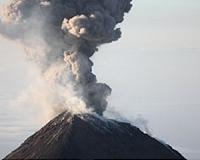| . |  |
. |
for The Hot Zone Moffett Fields CA (SPX) Jan 27, 2011 Climate modeling is an inexact science, and scientists have long known that the models don't account for everything, even though precision and accuracy is a big goal. But the limitations of climate modeling may have caused scientists to underestimate the Earth's sensitivity to CO2 by a factor of two, according to an analysis by National Center for Atmospheric Research scientist Jeffrey Kiehl. In a perspectives piece published in the journal Science, Kiehl says that the models have typically not factored in some of the long term feedback processes that determine the Earth's temperature over the course of centuries or millennia, including ice sheet loss and processes related to vegetation and carbon cycle changes. He came to this conclusion by looking into periods of high CO2 levels in Earth's history. At current rates of CO2 emissions, the Earth is on a trajectory to reach between 900 to 1100 parts per million CO2 in the atmosphere by the end of the century (right now we're at 390 ppm). The last time the Earth experienced that concentration of CO2 was 35 million years ago, a world that has sea surface temperatures more than four times higher than today. Based on this scenario, Kiehl calculated the net radiative forcing rate - or the difference between incoming and outgoing solar radiation - and compared that to estimates from other warm periods in the Earth's history. He found a similar magnitude of forcing in other past warm climate periods, and with confidence in those numbers estimated that the Earth was about 29 degrees Fahrenheit warmer than modern era pre-industrial levels, some 35 million years ago. "The conclusion from this analysis," he writes, "is that Earth's sensitivity to CO2 radiative forcing may be much greater than that obtained from climate models." Once the atmosphere reaches 1000 ppm CO2, he points out that it could take tens of thousands of years to return to modern day levels. "Thus, if atmospheric CO2 reaches 1000 ppmv, then human civilization will face another world, one that the human species has never experienced in its history (over the last 2 million years)." If CO2 concentration reaches this high level, long term feedback processes will amplify global warming beyond current modeling estimates, Kiehl says. "The human species and global ecosystems will be placed in a climate state never before experienced in their evolutionary history and at an unprecedented rate." That's the thing about modern day climate change. In the past, CO2 buildup appears to have happened over longer periods of time, but nowadays the rate of change puts us into a new pace for climate change. Nitrous oxide from streams contributing to climate change at three times rate previous expected Carbon dioxide is bad for global warming, but nitrous oxide (N2O) may be one of the worst chemical compounds you can pump up into the air. Not only does it have 300 times the potency of CO2, but it also destroys stratospheric ozone (the good kind) - a double whammy on the atmosphere. That's why it's unnerving to read a new study out of the Biological Sciences department of the University of Notre Dame that found N2O emissions coming from streams and rivers at three times the rate of IPCC estimates. Waterways may be responsible for some 10 percent of human-caused NO2 in the atmosphere, which from all sources accounts for 6 percent of global warming. Nitrogen gets into rivers and streams as runoff from agricultural areas, where it's applied as fertilizers, and from urban areas. Once it gets there microbes go to work and in a process call denitrification convert the nitrogen into nitrous oxide and another gas called dinitrogen (we worry less about the latter). In the study, published in the online edition of the Proceedings of the National Academy of Sciences, 72 streams were tested along different land-use types in the U.S. Those streams with the highest nitrous oxide emissions were also those closest to urban and agricultural areas. That suggests humans are loading the streams and stimulating the production of NO2, the authors claim. It all goes back to the way people have freed up the availability of Nitrogen in the biosphere, largely through growing crops. Nitrogen in waterways has been the source of other problems, too, namely nutrient loading of water bodies that causes sudden algae blooms that then strip away oxygen for other species. NO2 production is a less known problem emanating from waterways, but as the study shows, no less important.
Share This Article With Planet Earth
Related Links The Hot Zone Climate Science News - Modeling, Mitigation Adaptation
 Man, Volcanoes And The Sun Have Influenced Europe's Climate Over Recent Centuries
Man, Volcanoes And The Sun Have Influenced Europe's Climate Over Recent CenturiesBarcelona, Spain (SPX) Jan 21, 2011 An International research team has discovered that seasonal temperatures in Europe, above all in winter, have been affected over the past 500 years by natural factors such as volcanic eruptions and solar activity, and by human activities such as the emission of greenhouse gases. The study, with Spanish involvement, could help us to better understand the dynamics of climate change. Up until ... read more |
|
| The content herein, unless otherwise known to be public domain, are Copyright 1995-2010 - SpaceDaily. AFP and UPI Wire Stories are copyright Agence France-Presse and United Press International. ESA Portal Reports are copyright European Space Agency. All NASA sourced material is public domain. Additional copyrights may apply in whole or part to other bona fide parties. Advertising does not imply endorsement,agreement or approval of any opinions, statements or information provided by SpaceDaily on any Web page published or hosted by SpaceDaily. Privacy Statement |